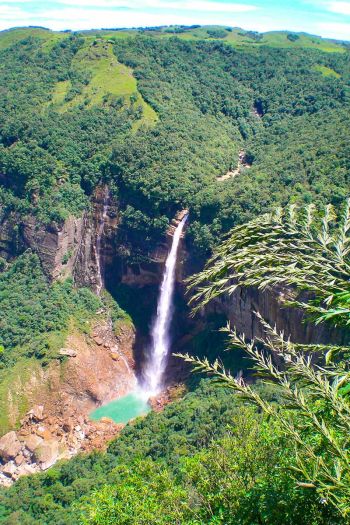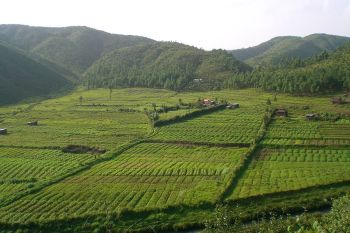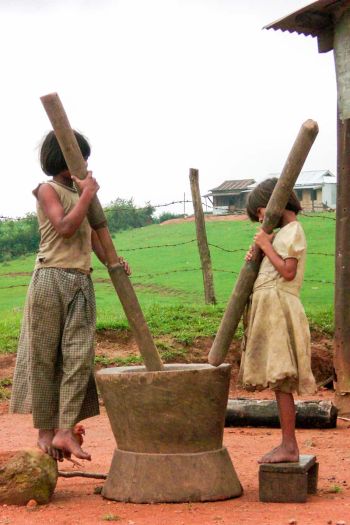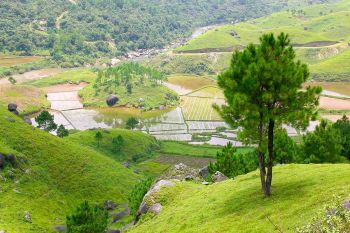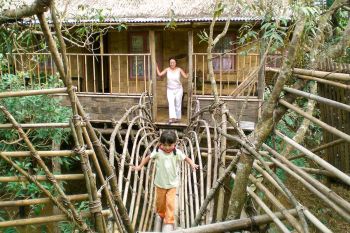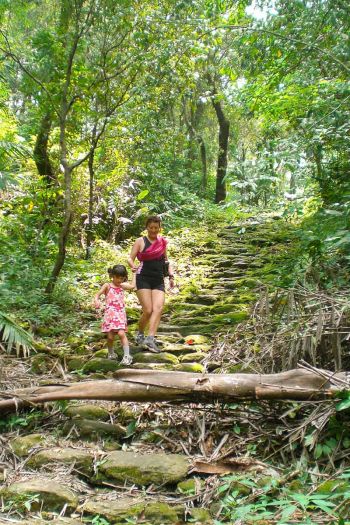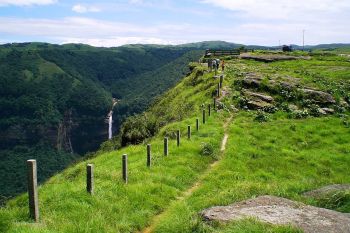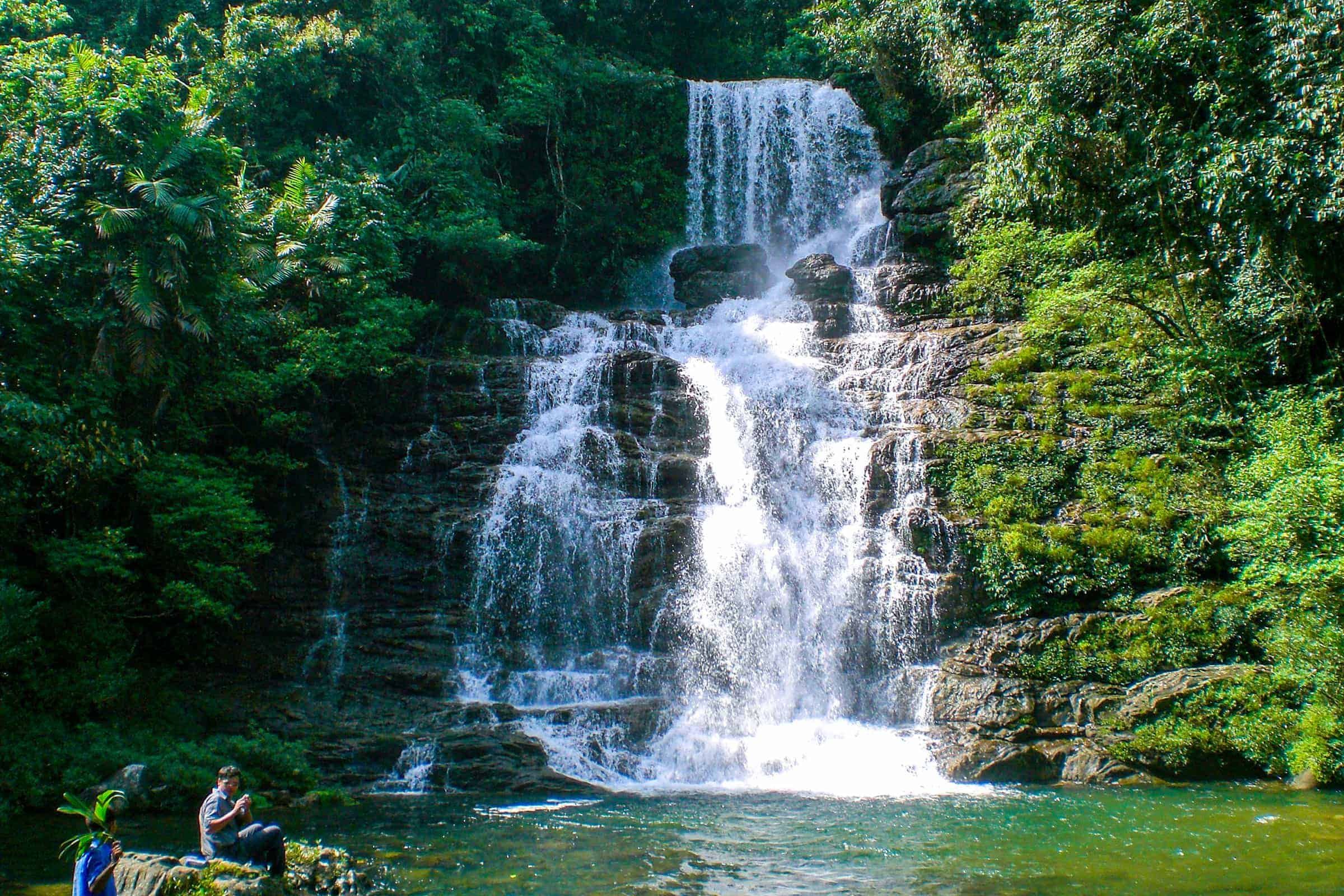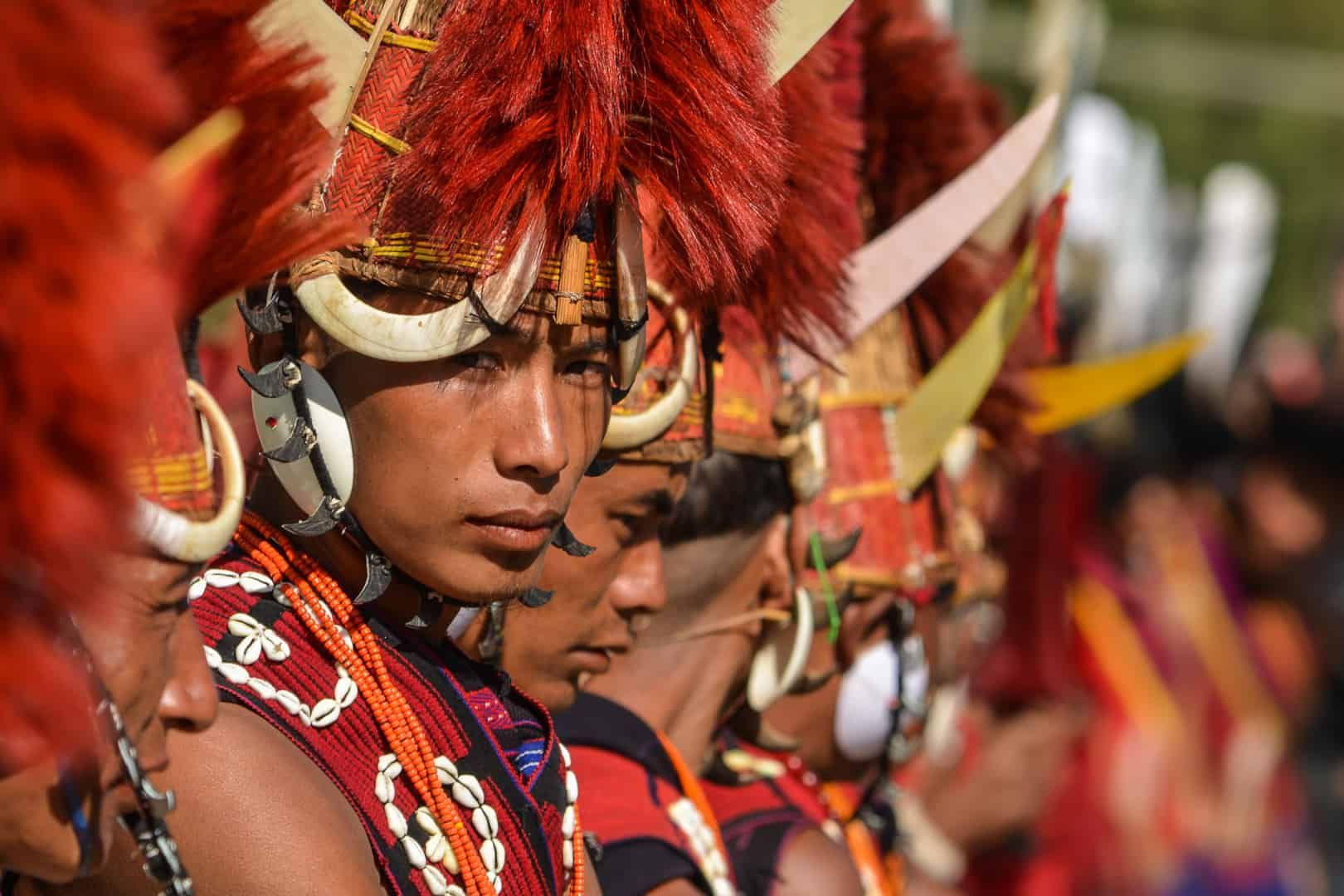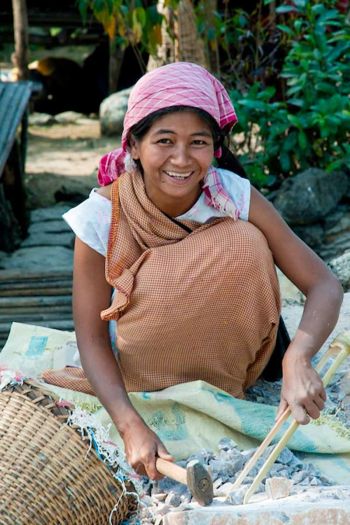Meghalaya
General information
Meghalaya is a small state in India’s northeast, barely touched by tourism, embraced by its sister state of Assam to the north and Bangladesh to the south. It is home to the Khasi tribe, one of the few peoples in the world where daughters inherit and women are perhaps even a touch more than equal. Meghalaya is often referred to as the “Indian Scotland” and its green hilly landscape full of bizarre limestone formations immediately confirms this association – also due to the amount of rainfall.
Translated from the language of the indigenous people, the name Meghalaya means “house of clouds”, and the truth of this name becomes obvious when you look down from the high plateau of Cherrapunjee over the surrounding lowlands, which seem to be steaming with evaporating moisture. Meghalaya fascinates with its gentle hilly landscapes full of forests, pastures, rice fields and farmland. The sacred groves, crystal-clear rivers, waterfalls that shoot down from Meghalaya’s high plateau towards Bangladesh and the nature-loving way of life of the locals are typical and picturesquely inviting to tourists.
The Meghalayan population is dominated by the original tribal peoples, the Khasi, the Janitias and the Garo. These people, most of whom have converted to Christianity and live in peaceful harmony with nature, welcome you to their country. A visit to a Khasi village in particular is astonishing and fascinating for those interested in culture, as they live a matrilineal structure rooted in ancient times. High priestesses have a powerful status in the community and traditionally the youngest daughter inherits the property. The Khasis are also among the most amazing bridge builders in the world.
The roots of living rubber or banyan trees lead them across watercourses through hollowed-out trunks of betel nut palms. Once they have grown on the other bank, they form the basis of a living bridge, which becomes stronger and stronger as more roots are woven into it. The architectural collaboration between man and nature thus creates self-strengthening and regenerating bridges, some of which are well over 100 years old. The Jaintia people also use nature alone to create their impressive monolith gardens, in which vertical stones weighing several tons watch over the surrounding stones and remind us of certain family members. A visit to a Garo village provides an adventurous tingle when you remember their past as headhunters – which in fact was a long time ago! – past as headhunters. Incidentally, the red-colored mouths of many locals have no connection to this past, but are due to the widespread chewing of the betel nut.
Due to the pleasant climate at the recommended travel time, Meghalaya’s hilly landscape is very easy to explore by bike. On bike tours, you can experience the extraordinary wealth of butterflies and moths during your active vacation and enjoy the wide panorama of gentle mountain landscapes and crystal-clear watercourses and waterfalls. If you would like to descend into the underworld via your bridge to the Indian East, a vacation in Meghalaya is also recommended, as more impressive stalactite caves are hard to find. We are happy to integrate individual, professional cave explorations on foot and by raft into your tour.
Our tours in Meghalaya
Best time to travel
The climate is ideal for a vacation from October to November and from March to June. In winter, temperatures are usually low, while in summer (especially in July and August) Meghalaya is hit by the monsoon. Occasional rain showers can be expected all year round, with an average annual rainfall of up to 120cm, Meghalaya is the wettest state in India.
The year is divided into three seasons: Summer (warm): March to June; Monsoon (rainy and warm): July to September; winter (cold, especially at night and early in the morning): December to February.
